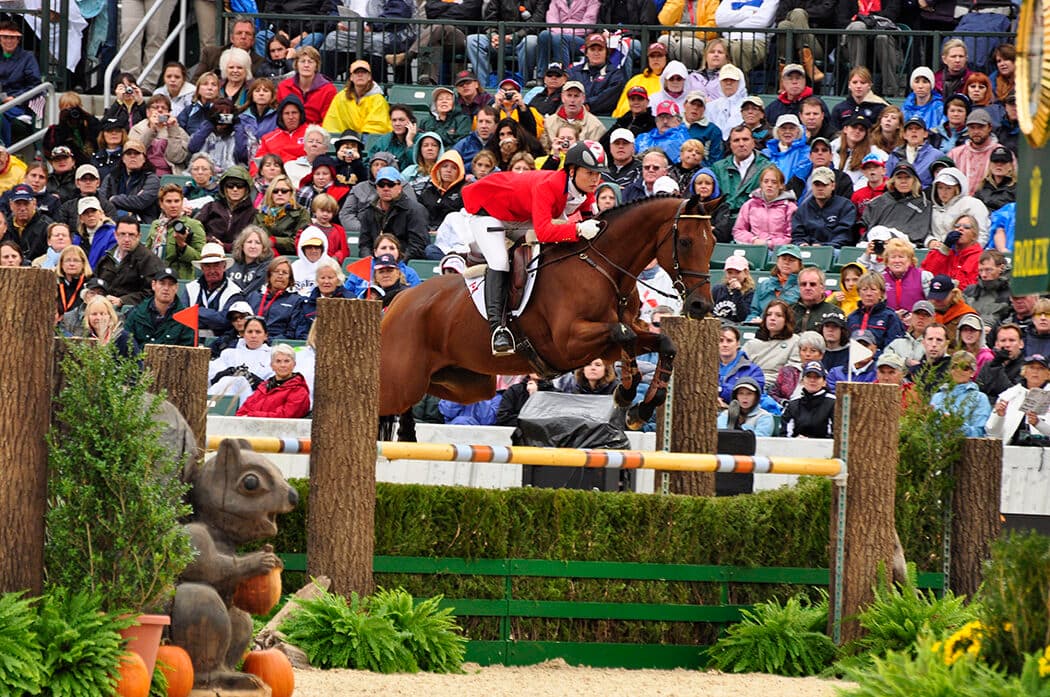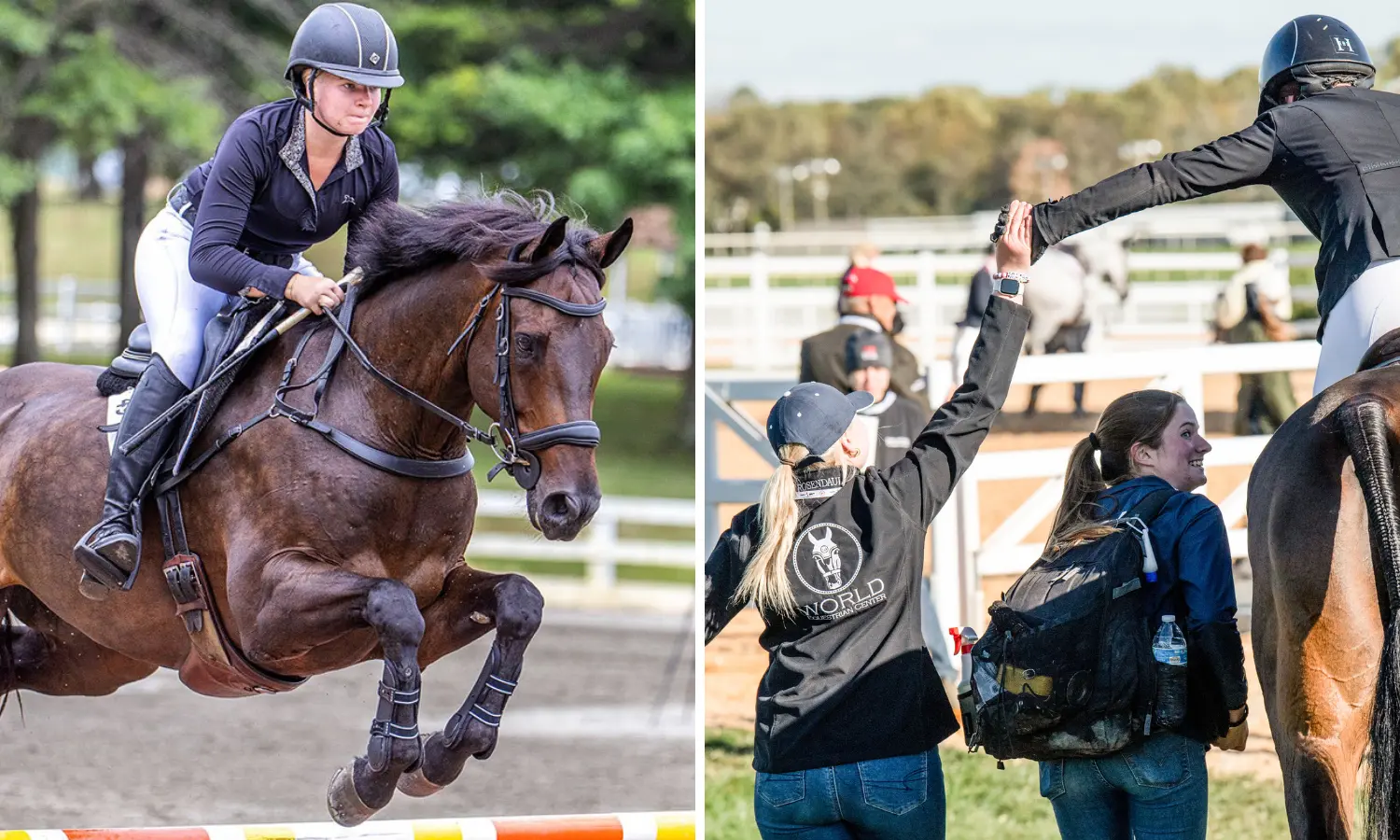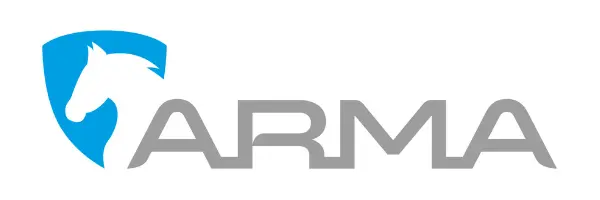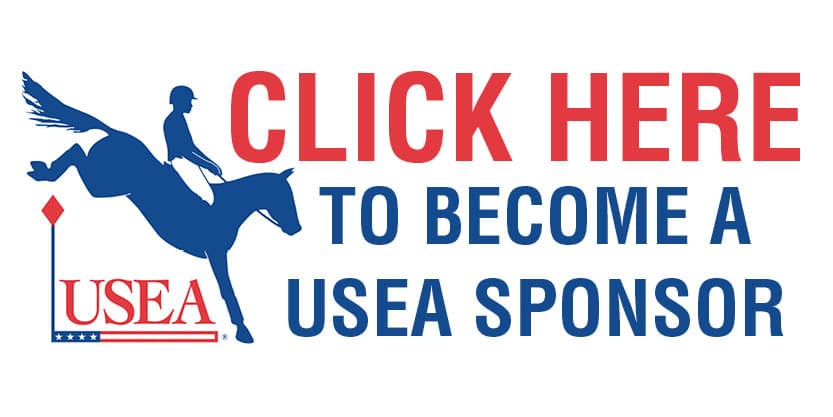Grid Pro Quo with Stephanie Rhodes-Bosch

Don't let winter weather get you down. Use the off season as an opportunity to fine tune your riding! In this winter weekly web series, we will revive past Grid Pro Quo articles from our magazine, Eventing USA, to help you brainstorm ways to keep you and your horse in tip-top shape even if you only have access to an indoor arena.

Why:
This is one of my favorite exercises for horses that are just coming back into work after some time off, whether they were getting some scheduled vacation or some unscheduled rehabilitation. With plenty of rails on the ground, Exercise #1 is a great exercise for reminding the horses of where to put their bodies. The rails are not there to try to trip them up in an effort to sharpen them. Rather, the rails are there to spell things out a bit and give them confidence. If the horse starts to rush a little or lands in a heap, the ground rails help the horse and rider regain their center of balance. Consequently, if the rider gets off balance, the ground rails will make the horse’s job twice as hard, as they now have to not only keep their center of balance, but also adjust for their off-centered rider. So it is a great exercise of control for the rider.
The second exercise is testing the skills that learned in the first exercise. It is a challenge to see if you can keep the canter manufactured in Exercise #1 on your own. I tend to put five strides between the rail and the oxer because I find that it is just the right amount of space between the ground rail and the oxer. Any more and you are lending yourself to getting flat, and any less would pose no challenge. Putting these two exercises together will really encourage your horse to jump up and around the fences, which is just what you want when coming back into work.
How:
Exercise 1
I will start Exercise #1 with all of the rails on the ground. I will let the horses, especially the young horses, to walk through the rails and then trot through them. Ideally you will be walking and trotting through the rails on a soft, if not long, rein. The idea is to let the horses figure out the footwork on their own. Once you have done that a few times, pick a soft connection at the canter. You don’t want your horse to flounder around on a long rein, but you also don’t want to be micromanaging. So work on the rail or on a circle until you have the connection that you want, and then casually canter through the rails a few times. Be sure to change direction each time you come through, and if your horse finishes on the incorrect lead, don’t worry, just fix it through a simple or flying change, ideally before reaching the end of the arena.
Once you have warmed up sufficiently over the rails, I will actually put in the oxer first, as there are enough rails on either side to help you maintain your rhythm before and after the fence. Keep a consistent rhythm, and once you have accomplished this, add the first vertical and then the last vertical. If your rhythm gets quicker or slower at any point, just make your correction and try again. When you are able to maintain a metronome rhythm not only through the grid, but also in your approach and departure, you are ready to move on to Exercise #2.
Exercise #2
This is one of those exercises that is only as complicated as you make it. Simply put, you have a ground rail five strides before an oxer. Your job as the rider is to be calm and patient, allowing your horse to find the rhythm and striding to the oxer. Depending on your horse’s fitness, it is often helpful to gradually raise this oxer until it is at your maximum comfort level. Being patient to a big oxer can be quite challenging for some riders. Use this as a time to school the challenge so that when you are faced with a big square oxer off a long approach in competition, you know exactly what to do.
Overall, these jumps don’t need to be big to make your point. If you have a horse that does tend to rush, I would rather teach them to wait over smaller fences than just raise the jumps in an effort to hold him off the fences. In fact, if you do have a horse that rushes, I would suggest installing a verbal “whoa” button before jumping anything. This may sound simple and silly to some, but it has come in handy many times in my competitive career. What I will do is pick up my canter around the arena doing canter-walk and walk-canter transitions. Before doing any downward transition, I will say “whoa.” Eventually your horse should put the verbal “whoa” command together with slowing down a gear. When you are jumping, it is most helpful to use the “whoa” command after your horse has taken off and is starting to put the landing gear down. Then they know to land and go slow, versus landing and rushing. If your horse is a more committed rusher, start off cantering up to a single jump (the oxer in Exercise #2 will work) and halt three strides out using the same “whoa” command. Eventually your horse should realize that you are in charge of the pace!
On the opposite end of the spectrum, if your horse is getting stuck or sucking back, you also need some tools in your toolbox to deal with this problem. The first step to fixing a horse that is behind your leg is to be able to realize it immediately. In Exercise #1, you will usually be able to feel this over the canter rails. I tend to give the horse the benefit of the doubt and will treat them as if they are uncertain of where to put their feet, so I will spend more time with the rails on the ground before introducing new jumps. I will not add any new jumps until they are 110 percent confident about what they are currently doing. If I need to make a correction, I will do so after the last fence. A correction in the middle of a grid risks pushing your horse off balance and denting his confidence, which is the last thing you want to do.
About Stephanie
Born in Alberta, Cananda, Stephanie Rhodes-Bosch rose to fame with a team silver medal at the 2010 World Equestrian Games. With long-time partner Port Authority, Stephanie has earned multiple top Advanced finishes across the country at venues such as The Fork CIC3*, Jersey Fresh CCI3*, Fair Hill CCI3*, and Rolex Kentucky CCI4*. Through her program, SRB Equestrian, Stephanie pulls from her extensive experiences to give each of her students and training horses a customized, positive learning experience. SRB Equestrian Sports aims to produce event horses for competition and sale, with the goal of recruiting a string of top horses to campaign towards 3 and 4* events around the world. To learn more please visit her website https://srbequestriansports.wordpress.com/ or her Facebook page.














